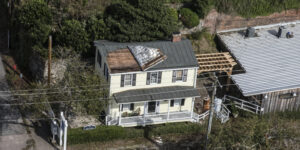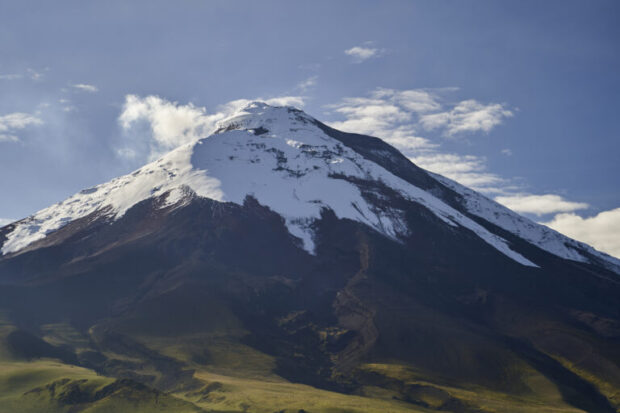The Danish Red Cross is offering the world’s first catastrophe bond for volcanic eruptions, which is designed to improve the provision and efficiency of humanitarian relief after eruptions of 10 volcanoes across three continents.
The cat bond aims to raise up to $3 million from investors for aid in the aftermath of an eruption. Initial investors are three insurance linked securities (ILS) specialists, Plenum Investments, Schroder Investment Management and Solidum Partners.
Sponsored by the Danish Red Cross with support from insurance group Howden Group Holdings, the cat bond catastrophe bond aims to transform the way disaster aid is activated and deployed by mobilizing humanitarian assistance from global capital markets.
By using advanced modeling developed by Mitiga Solutions and blockchain technology developed by Replexus, the bond will raise humanitarian funds in advance, and allow aid to be released more quickly and effectively while offering uncorrelated returns for investors.
The 10 volcanoes covered by the cat bond were selected for the significant humanitarian threat they represent, with at least 700,000 individuals living within 60 miles (100 kilometers) radius of a potential eruption. They include North America’s second highest volcano, Popocatépetl, in Mexico, and Colombia’s Nevado del Ruiz, which killed 23,000 and displaced thousands more when it erupted in 1985.
The other volcanoes covered by the bond include three in Ecuador (Cotopaxi, Tungurahua and Pichincha), two in Indonesia (Merapi and Raung), one in Chile (Villa Rica), one in Guatemala (Fuego), and one in Cameroon (Mt. Cameroon).
The bond is based on a trigger mechanism developed by Mitiga Solutions to set in motion a pay-out whenever a volcanic ash plume reaches a certain height and the prevailing wind directs the ash fall towards vulnerable communities.
“Mitiga Solutions has developed a state-of-the-art model using numerous data inputs to predict where funds will be needed, improving both the efficiency and effectiveness of humanitarian relief,” said Alejandro Marti, CEO and co-founder of Mitiga Solutions, Barcelona-based experts in predicting natural hazards. (Editor’s note: Mitiga Solutions’ website said it is a risk management company that combines artificial intelligence, machine learning, remote sensing and high-performance computing to develop models).
“Our model can anticipate the trajectory of the volcanic ash cloud using prevailing winds to better estimate the impact and more effectively guide cat bond proceeds,” Marti added.
A private blockchain for the bonds has also been developed by Replexus, helping to reduce costs by $200,000-400,000 per issue compared to traditional settlement systems.
“The volcano cat bond will be placed on an insurance-linked securities (ILS) blockchain, making the transaction particularly cost-effective for the aid agency and enabling secondary market trading among ILS investors,” said Cedric Edmonds, founder and CEO of Replexus, the Guernsey-based service provider that has created a platform for insurance risk securitization. (Editor’s note: Replexus’ platform is designed to replace “the illiquid reinsurance model” for ILS investments, according to the company’s website.)
“Additional benefits of the blockchain structure include allowing investors to hold their own securities on their own computer server rather than using a custody bank, and therefore saving five to 10 basis points per annum on the value of the securities they hold,” added Edmonds.
Charlie Langdale, managing director of Financial Lines for Howden Broking, commented: “The volcano cat bond is an important addition to the ILS market as it has the potential to revolutionize disaster relief finance. This ground-breaking innovation represents a springboard from which further products and markets can be developed.”
The company has donated funds for development of the bond, via its charitable unit, Howden Group Foundation. The Foundation “is committed to supporting causes that alleviate sickness, poverty and disasters around the world,” he said. “This product will help to bridge the insurance gap and allow greater access to insurance and the capital markets for the benefit of the charitable sector and those affected by natural disasters.”
Some 500 million people worldwide live near 1,500 active volcanoes, said the Danish Red Cross, indicating that the economic costs of eruptions are very high — even in developed nations.
As an example, the Red Cross statement cited the 2002 eruption of Mount Etna, Europe’s biggest volcano, which caused economic losses of $900 million in the months that followed.
Source: Danish Red Cross
Photograph: Cotopaxi is an active volcano in the Andes Mountains, in the Latacunga canton of Cotopaxi Province, south of Quito. Cotopaxi is the second highest summit in Ecuador and one of the world’s highest volcanoes.
*This story ran previously in our sister publication Insurance Journal.





















 How One MGU Grew Fivefold When Capacity Fled Cat-Prone Property Markets
How One MGU Grew Fivefold When Capacity Fled Cat-Prone Property Markets  Executive Utterances: On Presenting
Executive Utterances: On Presenting  6 Warning Signs for Insurers: How to Anticipate, Respond to Pipe Freezes
6 Warning Signs for Insurers: How to Anticipate, Respond to Pipe Freezes  Unique Structure of Reciprocal Insurance Exchanges Offers Release Valve on Pressurized Markets
Unique Structure of Reciprocal Insurance Exchanges Offers Release Valve on Pressurized Markets 